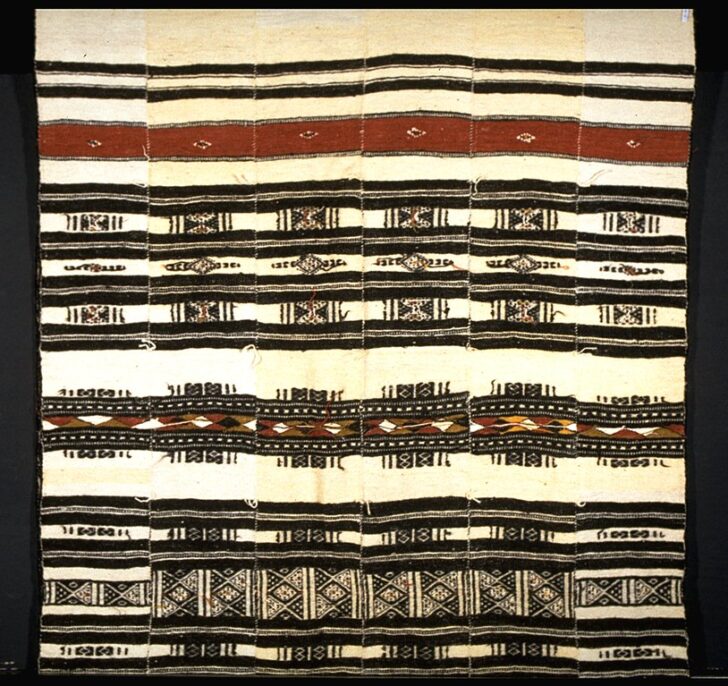Blanket (khasa)
Fulani

Description
Fall 2017 Gallery Rotation Label:
This textile, a densely-woven blanket made from hand-spun sheep’s wool, is known across West Africa as a khasa. Such textiles were first recorded in the twelfth century by Arab visitors to the region. Today they are still made by the Fulani, a group of nomadic peoples who migrate across several nations in West Africa, regularly crossing the Sahel and Sahara deserts.
These blankets serve both practical and symbolic purposes, functioning equally as protection from the elements, as spatial dividers in dwellings, and as prestigious gifts for wedding and funerary ceremonies. The intricacy of the design woven into a blanket largely determined its value: the least expensive blankets were plain white, while more valued textiles were elaborately decorated with colors, shapes, and lines. Some researchers have suggested that the geometric motifs depict dwellings, hilltops, and routes and therefore act as abstract representations of the natural environment the Fulani traverse.
Usage Rights:
If you are interested in using an image for a publication, please visit https://umma.umich.edu/request-image/ for more information and to fill out the online Image Rights and Reproductions Request Form.